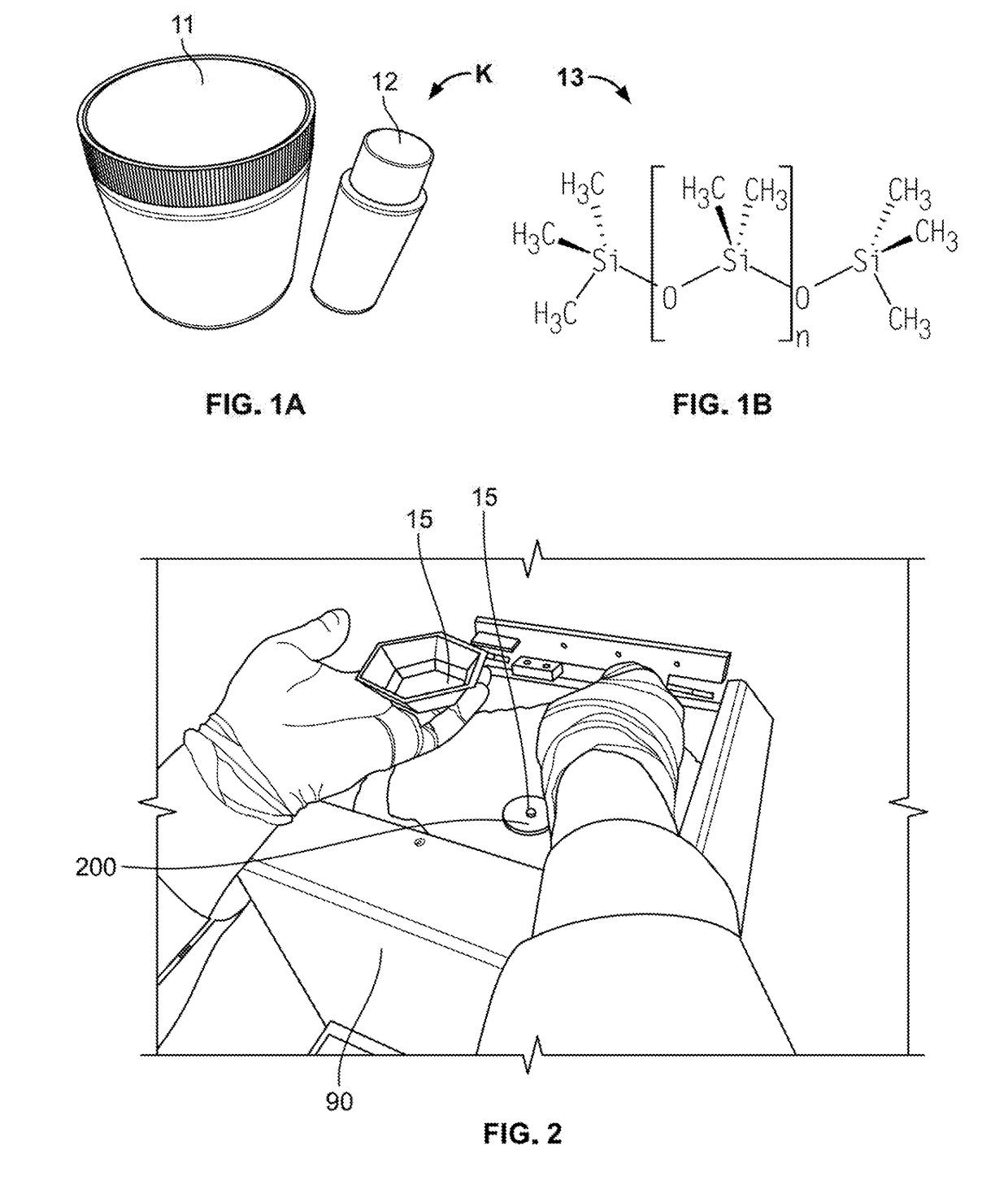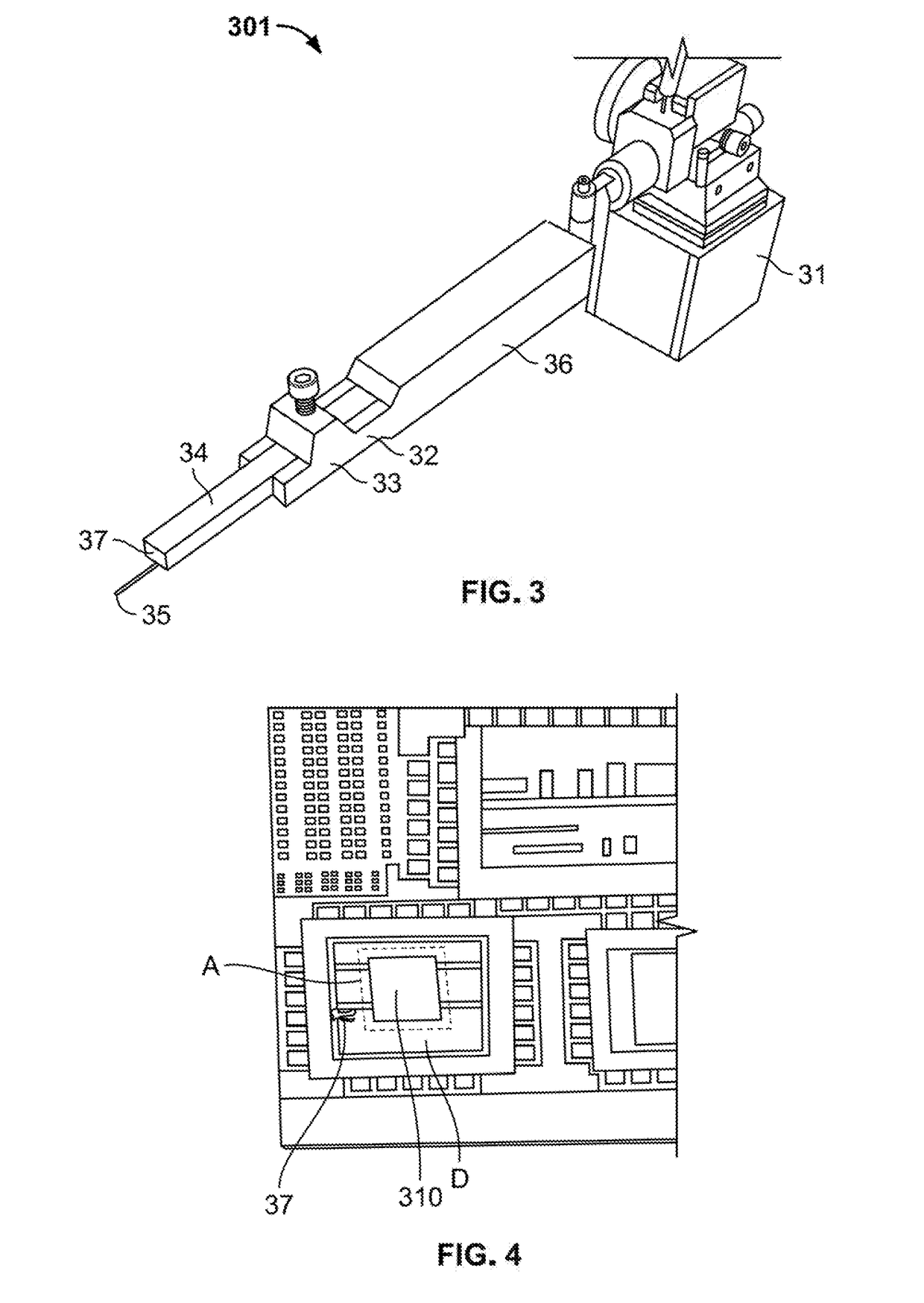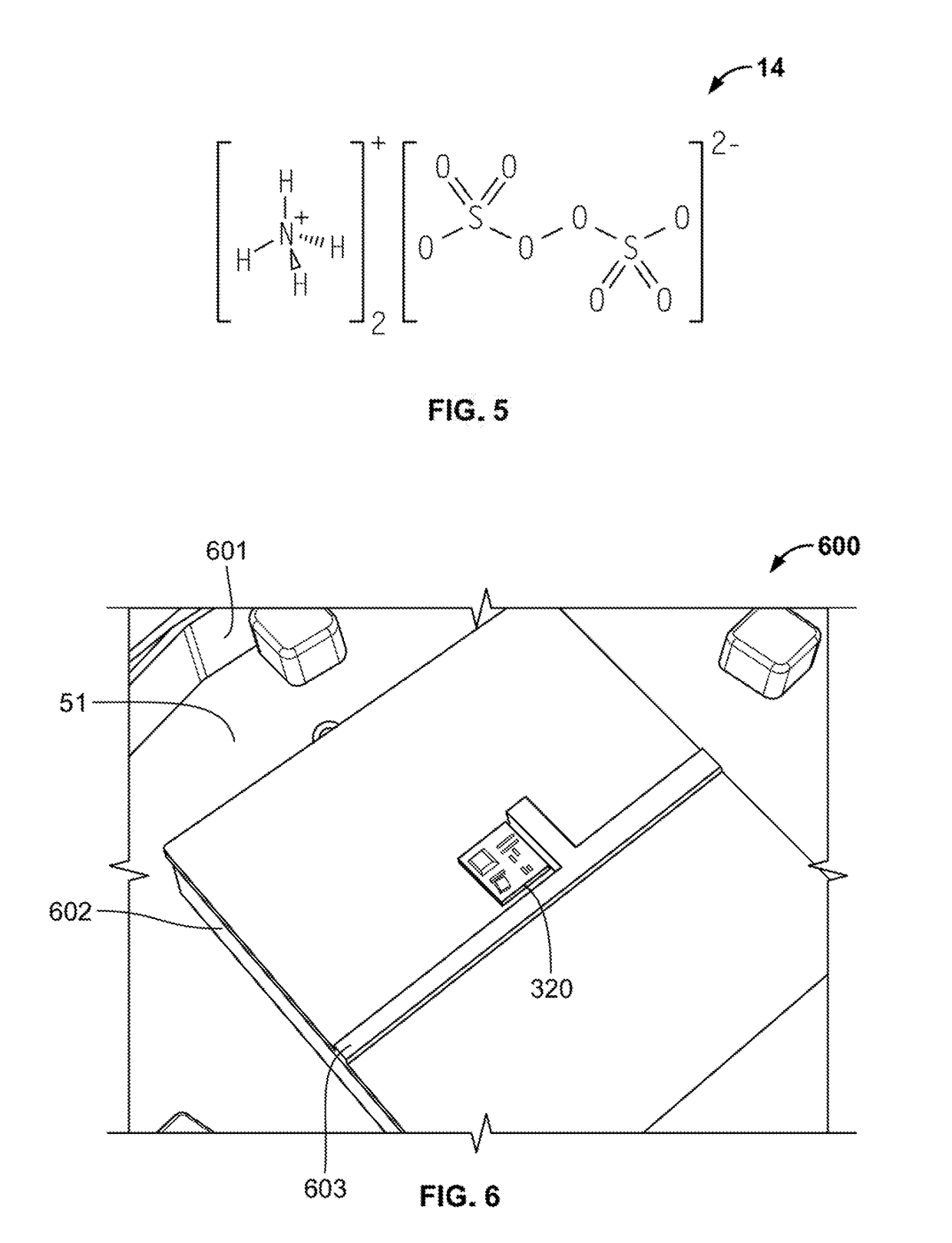Methods of Transferring a Graphene Monolayer via a Stacked Structure and Devices Fabricated Thereby
a technology of stacked structure and transfer method, which is applied in the direction of semiconductor devices, basic electric elements, electrical equipment, etc., can solve the problems of affecting the electronic response of graphene, and affecting the synthesis process
- Summary
- Abstract
- Description
- Claims
- Application Information
AI Technical Summary
Benefits of technology
Problems solved by technology
Method used
Image
Examples
Embodiment Construction
)
[0018]The present disclosure encompasses a method of preparing and transferring a graphene monolayer onto a stacked structure, wherein the graphene monolayer comprises a single layer of carbon atoms responsive to the presence of adsorbates for facilitating sensing thereof. The graphene monolayer has linear energy dispersion and two-dimensional structure properties which facilitate its use in nanoscale applications and in atomic level charge particle detection via charge detection on a surface of the graphene monolayer. In accordance with some embodiments of present disclosure, the method of preparing and transferring a graphene monolayer onto a stacked structure alternatively involves using an additive manufacturing technique, such as using a 3D printed platform. Graphene is synthesized on a metal catalyst layer, such as at least one of copper (e.g., a copper film), boron nitride, and nickel, by way of a chemical vapor deposition (CVD) from a carbon source. The embodiments of the p...
PUM
| Property | Measurement | Unit |
|---|---|---|
| temperature | aaaaa | aaaaa |
| temperature | aaaaa | aaaaa |
| thickness | aaaaa | aaaaa |
Abstract
Description
Claims
Application Information
 Login to View More
Login to View More - R&D
- Intellectual Property
- Life Sciences
- Materials
- Tech Scout
- Unparalleled Data Quality
- Higher Quality Content
- 60% Fewer Hallucinations
Browse by: Latest US Patents, China's latest patents, Technical Efficacy Thesaurus, Application Domain, Technology Topic, Popular Technical Reports.
© 2025 PatSnap. All rights reserved.Legal|Privacy policy|Modern Slavery Act Transparency Statement|Sitemap|About US| Contact US: help@patsnap.com



